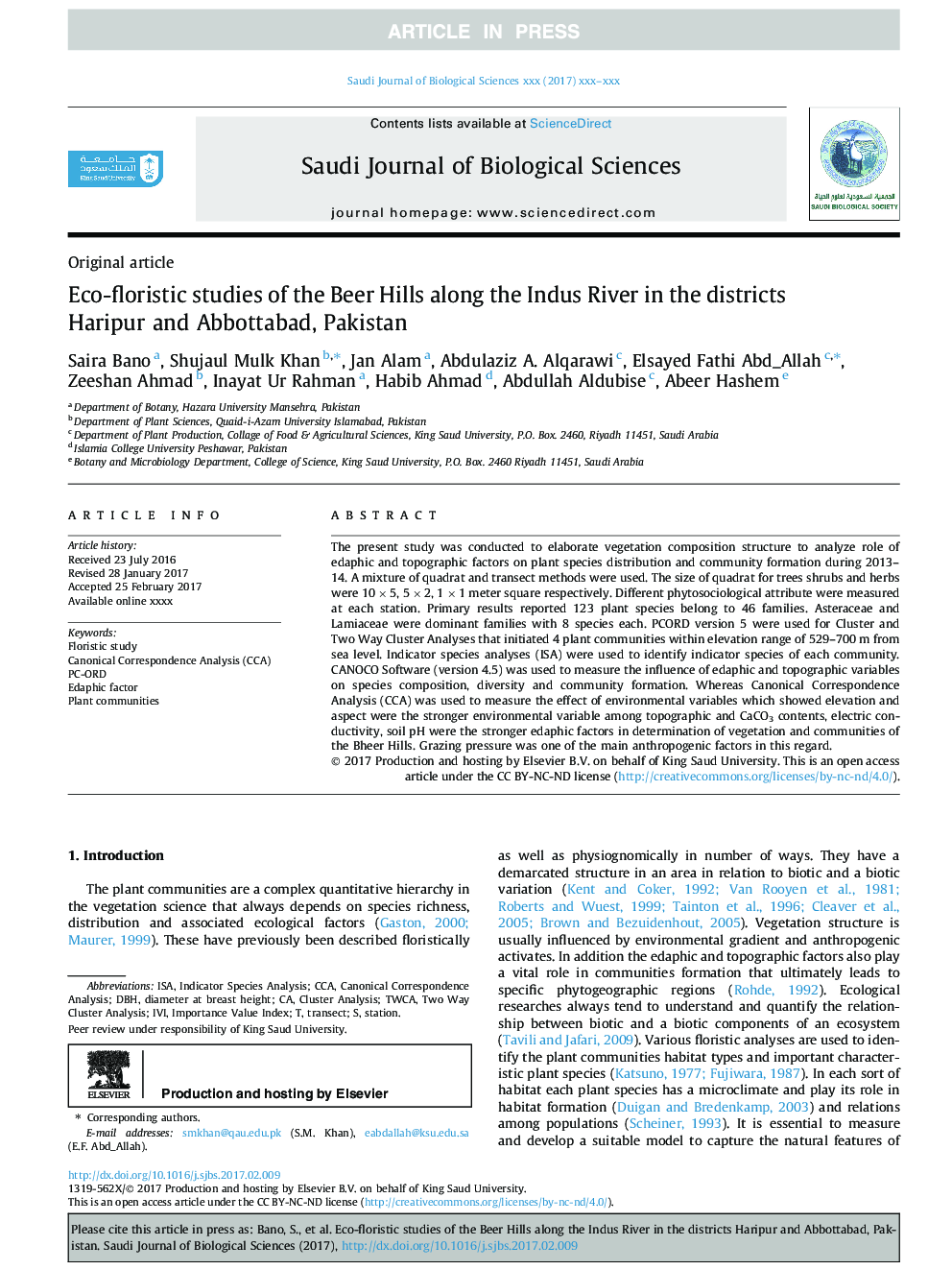| Article ID | Journal | Published Year | Pages | File Type |
|---|---|---|---|---|
| 8849809 | Saudi Journal of Biological Sciences | 2018 | 10 Pages |
Abstract
The present study was conducted to elaborate vegetation composition structure to analyze role of edaphic and topographic factors on plant species distribution and community formation during 2013-14. A mixture of quadrat and transect methods were used. The size of quadrat for trees shrubs and herbs were 10Â ÃÂ 5, 5Â ÃÂ 2, 1Â ÃÂ 1 meter square respectively. Different phytosociological attribute were measured at each station. Primary results reported 123 plant species belong to 46 families. Asteraceae and Lamiaceae were dominant families with 8 species each. PCORD version 5 were used for Cluster and Two Way Cluster Analyses that initiated 4 plant communities within elevation range of 529-700Â m from sea level. Indicator species analyses (ISA) were used to identify indicator species of each community. CANOCO Software (version 4.5) was used to measure the influence of edaphic and topographic variables on species composition, diversity and community formation. Whereas Canonical Correspondence Analysis (CCA) was used to measure the effect of environmental variables which showed elevation and aspect were the stronger environmental variable among topographic and CaCO3 contents, electric conductivity, soil pH were the stronger edaphic factors in determination of vegetation and communities of the Bheer Hills. Grazing pressure was one of the main anthropogenic factors in this regard.
Keywords
Related Topics
Life Sciences
Environmental Science
Ecology
Authors
Saira Bano, Shujaul Mulk Khan, Jan Alam, Abdulaziz A. Alqarawi, Elsayed Fathi Abd_Allah, Zeeshan Ahmad, Inayat Ur Rahman, Habib Ahmad, Abdullah Aldubise, Abeer Hashem,
